-

Case 1
Interstitial lung disease (ILD)
An elderly female patient, 60 years old, with interstitial lung disease for more than 7 years, had repeated cough, chest tightness and asthma after exercise, and had negative rheumatic immunological examination, pulmonary HRCT showed interstitial inflammation changes in bilateral lungs.The patient had Hashimoto thyroiditis, and took thyroxine tablets in normal times. The patient had a history of cold air and crab allergy. She was transplanted with autologous reinfusion preparation of bronchial basal cells in March 2017. Three months after transplantation, the lung function test showed that the patient's diffuse function DLCO-SB continued to increase from 26.2% before reinfusion to 31%, with a growth rate of 18%, and DLCO-VA continued to increase from 39.6% before reinfusion to 45.6. %, an increase of 15%.
-
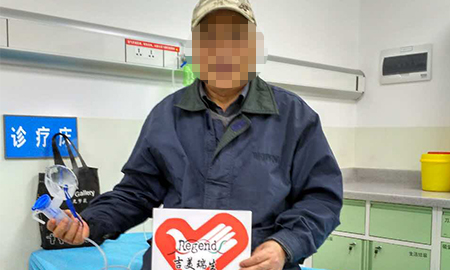
Case 2
Interstitial lung disease (ILD)
An elderly male patient, 66 years old, with interstitial lung disease for more than 2 years, had repeated cough, expectoration with shortness of breath and mucoid sputum group, less sputum can cough up, no chills; patient had hypertension and type 2 diabetes for 7 years. The results of rheumatic immunology were negative; the pulmonary ventilation function was basically normal and diffusion function was moderately impaired; pulmonary HRCT showed that bilateral lungs were interstitial fibrosis with chronic inflammation, and localized honeycomb changed especially in the right lower lung. About 2 years ago, the patient underwent bronchoscopy at Shanghai Pulmonary Hospital. No tuberculosis bacteria and no tumor cells were found. The patient was transplanted with autologous reinfusion preparation of bronchial basal cells in May 2017. Three months after transplantation, the diffuse function of DLCO-SB increased from 50% before reinfusion to 60.7%, the growth rate was 21.41%, the DLCO/VA increased from 80.2% before reinfusion to 90.9%, and the growth rate was 13.3%.
-

Case 3
Interstitial lung disease (ILD)
A middle-aged female patient, 53 years old, with interstitial lung disease for more than 4 years, had recurrent episodes of shortness of breath and fatigue after exercise. The common tumor markers and rheumatic immunological tests were negative. The patient was transplanted with autologous reinfusion preparation of bronchial basal cells in July 2017. In the first three years before cell transplantation, the patient had a shortness of breath, fatigue, progressive aggravation, repeated colds, multiple hospitalizations. One year after cell transplantation, lung function tests showed that the patient's diffuse function DLCO increased from 68.3% before treatment to 85% after treatment, with an increase rate of 24.45%. At the same time, the patient did not have a cold in one year after cell transplantation, and the symptoms of interstitial lung disease such as shortness of breath and fatigue almost disappeared, and the quality of life improved radically.
-
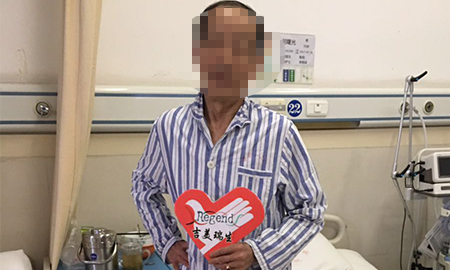
Case 4
Chronic obstructive pulmonary disease (COPD)
An elderly male patient, 63 years old, suffered from severe chronic obstructive pulmonary disease. The patient had repeated cough and expectoration for more than 20 years and barrel chest, aggravated with activity for more than 15 years after the activity; pulmonary HRCT showed bilateral emphysema, multiple inflammation in bilateral lower lobe and right middle lobe, multiple proliferation and fibrous foci in bilateral lung. The results of the pulmonary function report showed severe mixed ventilatory dysfunction, severely reduced small airway function, and severe diffuse dysfunction. The patient was regularly treated with seretide and tiotropium bromide powder inhalation, and the condition was stable. The DLCO of the patient's lung diffusion function index was 37.3% before transplantation, and 3 months after transplantation the DLCO index was 44.1%, which was improved by 11.8%. This was a clinically significant improvement, and the patient's lung diffusion function was changed from severe to moderate. The symptoms of cough and expectoration were significantly improved six months after cell transplantation compared with those before transplantation. Cell transplantation was effective.
-
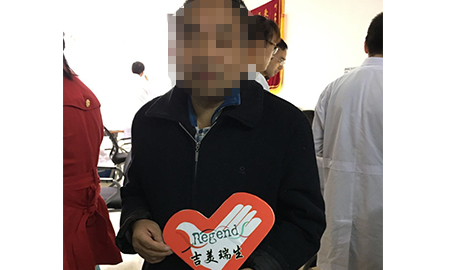
Case 5
Chronic obstructive pulmonary disease (COPD)
An elderly male patient, 81 years old, from Wuhan, Hubei, with chronic obstructive pulmonary disease, had intermittent cough and sputum for 2 years and shortness of breath for 1 year after exercise. The patient has a history of emphysema for more than 20 years. Several years ago, the patient's condition was not improved significantly after treatment in American hospitals according to the principles of anti-infection, phlegm-resolving, cough-relieving and symptomatic treatment. The patient underwent transurethral resection of the prostate in October 2016. The patient smoked for more than 50 years and had given up smoking and alcohol. The pulmonary function report showed that the patient had mild obstructive ventilation dysfunction and negative bronchodilation test. Pulmonary HRCT showed the patient had chronic bronchitis with emphysema, multiple alveoli formation in bilateral lungs, multiple nodules in the right lung, a few scattered chronic inflammation in bilateral lungs, multiple cysts in the liver, and cysts in the left kidney. The patient was transplanted with autologous reinfusion preparation of bronchial basal cells in April 2017. Three months after cell transplantation, the patient's 6-minute walking distance increased from 435 meters before the cell transplantation to 558 meters. At the same time, the patient's self-reported cough and sputum situation has improved, not as often as before, climbing and going upstairs will not feel short of breath, no longer need to stop to rest when walking fast, can walk outside or do some relaxed exercise, breathing will no longer hinder them to do what they want to do. Cell intervention was effective.
-
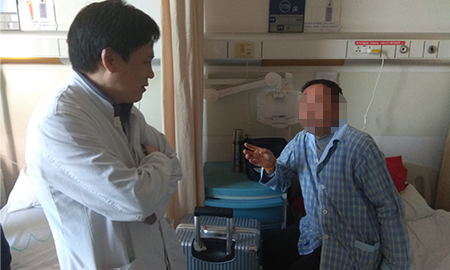
Case 6
Chronic obstructive pulmonary disease (COPD)
An elderly male patient with chronic obstructive pulmonary disease, 65 years old, from Huai'an, Jiangsu Province, suffered from repeated cough and asthma for more than 5 years and then aggravated for 1 month. Every year, the cough and asthma attack lasted for more than three months. In the past 4 years, this situation was frequent and gradually worsened. The patient had a history of hypertension for several years. He usually took felodipine and his blood pressure can be controlled. The patient had smoked for more than 50 years, one pack a day. The patient had barrel chest; HRCT showed emphysema, multiple bullae in the right lung, slight inflammation in bilateral lungs, and cysts in the right lobe of the liver. The patient was transplanted with autologous reinfusion preparation of bronchial basal cells in March 2017. One month after cell transplantation, lung function test results showed that the patient's FVC increased from 64.5% before cell transplantation to 87%, and the increase rate was 22.5%. Three months later, the patient's lung ventilation capacity continued to increase to 92%.
-

Case 7
Bronchiectasis (BE)
A young male patient, 37 years old, had been coughing repeatedly, coughing yellow pus sputum and hemoptysis for more than 10 years. The symptoms were more obvious after being cold. Ten years ago, the patient had a history of ankylosing spinal surgery and obsolete tuberculosis; married, had children and family healthy wasd good. HRCT showed bilateral lung bronchiectasis with lung destruction. The patient was transplanted with autologous reinfusion preparation of bronchial basal cells in November 2016. Six months after transplantation, the results of high-resolution CT showed that there was obvious tissue regeneration in the left lung of the patient. At the same time, the results of pulmonary function examination showed that the pulmonary function indexes of patients increased significantly. In the first half year of transplantation, the number of acute exacerbations was 4-5. In the second half year after transplantation, there was almost no acute exacerbation. Cell therapy was effective.
-
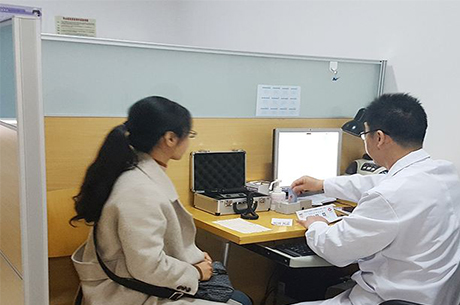
Case 8
Bronchiectasis (BE)
A middle-aged female patient, 43-year-old, suffered from with repeated cough and runny nose for more than 4 years and wheezing and pharyngeal discomfort for 5 months. She had obvious wheezing at night and was insensitive to odors. The pulmonary function showed severe mixed ventilation dysfunction, severe small airway dysfunction, abnormal lung volume, decreased diffusion function, increased airway resistance and positive bronchiectasis test. HRCT showed bilateral bronchiectasis, emphysema and suspected old tuberculosis. The patient was transplanted with autologous reinfusion preparation of bronchial basal cells in October 2016. One month after transplantation, the results of pulmonary function tests showed that FVC increased from 49.5% of the pre-treatment predicted value to 58.0%.Three months after transplantation, FVC increased to 63.6%. Six months after transplantation, DLCO increased from 56.3% before transplantation to 67.3%, and the six-minute walking distance increased from 447 meters before transplantation to 540 meters after transplantation. The results of high-resolution CT showed obvious tissue regeneration in the damaged right lung.
-
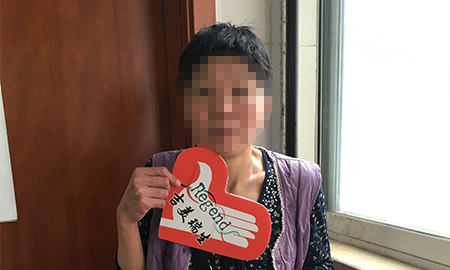
Case 9
Bronchiectasis (BE)
A middle-aged female patient, 46 years old, had symptoms of bilateral bronchiectasis with infection for several years, bilateral pleural thickening and sticky, multiple pulmonary bullae in right lung, and mediastinal lymphadenopathy. The patient was transplanted with autologous reinfusion preparation of bronchial basal cells in January 2017. Before cell transplantation, whenever tracheal infection occurred, he would have shortness of breath and cough. He felt that the trachea is not good for most of the week. Whenever he went up and down stairs, up and down hills or does exercises, he would cough and feel shortness of breath. Six months after cell transplantation, patients coughed and spat for only a few days in a month, breathing difficulties and shortness of breath did not occurred, coughing wheeze was not painful, but also some simple sports or games, up and down stairs, up and down hills did not be as coughing wheeze as before. After cell transplantation, the patient's quality of life was greatly improved, and the curative effect of bronchial basal cell therapy was definite.
-

Case 10
Bronchiectasis (BE)
A Middle-aged male patient, 46 years old, had symptoms of repeated cough, coughing out yellow phlegm for more than 20 years, intermittent phlegm and blood for more than 7 years. HRCT showed multiple bronchodilation of the lungs had infection, lung emphysema sign. The patient was transplanted with autologous reinfusion preparation of bronchial basal cells in January 2017. Three months after transplantation, the results of pulmonary function test showed that DLCO-SB increased from 72% before reinfusion to 83.16% with a growth rate of 15.5% and maintained a half-year , DLCO/VA increased from 92.8% before reinfusion to 113.23% with a growth rate of 22% and maintained a half-year. According to the patient's self-report, before transplantation he often coughed, and shortness of breath occured when he was infected. Thoracic and pulmonary diseases caused many times of dyspnea, each lasting for 3-7 days. Three months after transplantation, the patient only coughed slightly when tracheal infection occurred, and was no longer short of breath. Chest and lung diseases did not have very uncomfortable breathing difficulties, feel well, and the quality of life improved greatly.
-
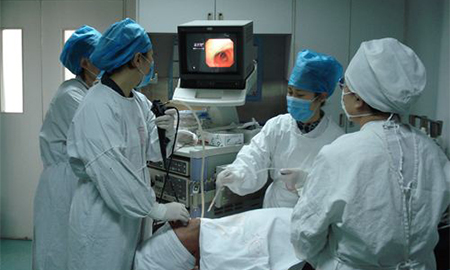
Case 11
Bronchiectasis (BE)
A middle-aged female patient, 52 years old, with bilateral bronchiectasis accompanied by infection, had repeated cough, purulent sputum and hemoptysis for more than 29 years and suffered from the disease for most of her life. The quality of life was poor. She felt tired when she underwent pulmonary function tests and coughed for a long time. The patient was transplanted with autologous reinfusion preparation of bronchial basal cells in May 2018. Half a year after cell transplantation, the patient's pulmonary symptoms improved significantly, and the pulmonary function test was not tired at all, very relaxed. The 6-minute walking test was also very relaxed and significantly improved compared with that before cell therapy. The therapeutic effect of bronchial basal cells transplantation is confirmed.
| |CN
|CN
 |CN
|CN
